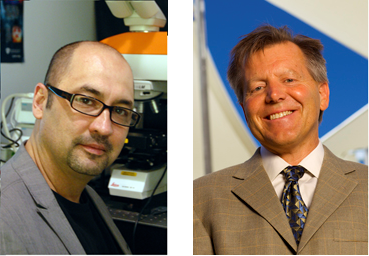Charge-density wave processor technology touted for power efficiency
Sep 26, 2011 — by Eric Brown — from the LinuxDevices Archive — 1 viewsResearchers at UC Riverside have received $1.5 million from the National Science Foundation and other sources to study a more power-efficient processor that encodes data with charge-density waves (CDWs) rather than electrical currents. A prototype for a CDW-based computer has already been built, showing promise for processors that could “drastically reduce power consumption and increase speed in the next generation of computers,” claim the researchers.
The charge-density wave (CDW) technology was developed primarily at the University of California (UC) Riverside's Bourns College of Engineering by Alexander Balandin, a professor of electrical engineering and chair of the materials science and engineering program, along with Roger Lake, a professor of electrical engineering. The researchers are collaborating on the project with John Stickney, a professor of chemistry at the University of Georgia.
Balandin's Nano-Device Laboratory has already built the first CDW prototype device. Balandin is the project's principal investigator, coordinating experimental research in his lab with Lake's computational studies and Stickney's materials growth activities, says UC Riverside.
The $1.5 million award was provided under the nationwide Nanoelectronics for 2020 and Beyond competition. The researchers will receive $1.3 million from the National Science Foundation (NSF), as well as a gift of $200,000 from the Nanoelectronics Research Initiative of Semiconductor Research Corp., among other funding sources. Semiconductor Research is a technology research consortium whose members include Intel and IBM.

UC Riverside Professors Alexander Balandin(left) and Roger Lake
Source: UC Riverside
Rather than encode information with conventional electrical currents, individual charges, or "spins," the prototype CDW computer instead depends upon the collective states formed by charge-density waves. Found in the crystal lattices of certain materials, CDWs are modulations in the electron density and associated modulations of atom positions, say the researchers. Scientist discovered the effects almost a century ago, but they have never before been applied to computing.
The key advantage of using CDWs instead of the electrical currents of individual electrons is the ability to greatly reduce the amount of power needed per computation, say the researchers. The CDW processor encodes data in "collective states" including the phase, frequency, and amplitude of the collective current of the interfering charge waves. This approach is said to allow for massive parallelism in information processing with related low power dissipation.
Other advantages to the technology, compared to other cutting-edge computational schemes being proposed, is that it can be implemented at room temperature and does not require magnetic fields, say the researchers. In addition, the CDW materials can be integrated with standard silicon and other materials used in conventional computers, thereby increasing the power efficiency of more conventional computers, they claim.
While the goal of the project is to develop a functional CDW-imbued computer, the project should also advance pure research goals such as understanding the material properties and physical processes of CDW materials in highly-scaled, low-dimension regimes. Potential outcomes from the research are said to include optimized device designs for exploiting CDWs for computations and understanding the fundamental limits of the performance metrics.
CDWs present "an absolutely new approach for solving the scaling and heat dissipation problems in electronics," stated Balandin, who received this year's Pioneer of Nanotechnology Award from the IEEE Nanotechnology Council.
This article was originally published on LinuxDevices.com and has been donated to the open source community by QuinStreet Inc. Please visit LinuxToday.com for up-to-date news and articles about Linux and open source.